Your cart is currently empty!
Blog
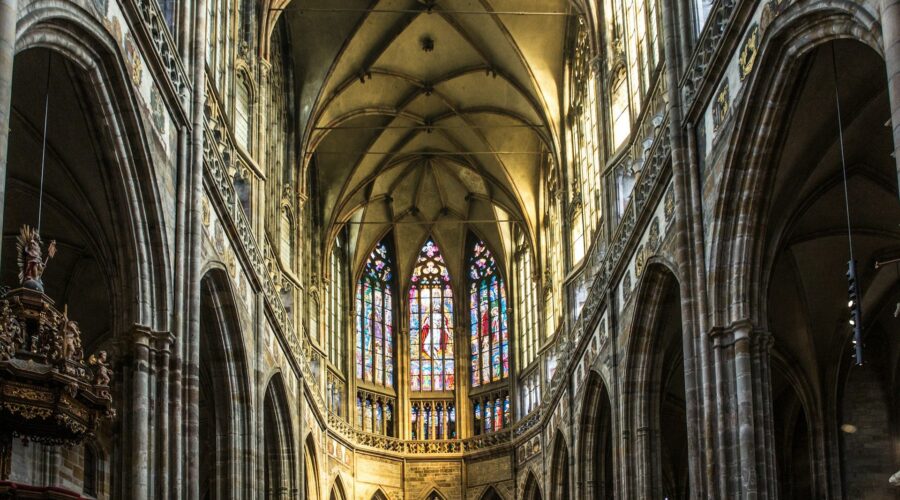
Discover the Rich History and Impactful Ministry of Christ Covenant Church
Introduction
Nestled in the bustling city of Charlotte, North Carolina, Christ Covenant Church stands as a testament to the transformative power of faith and community. Founded in 1983, this vibrant congregation has played a pivotal role in shaping the spiritual landscape of the region and beyond.
A Solid Foundation: The Early Years
Christ Covenant Church’s roots can be traced back to a small group of believers who yearned for a church that emphasized biblical teaching, genuine worship, and a welcoming atmosphere. Led by Pastor Scott Thomas, they gathered for the first time in a classroom at Covenant Day School in September 1983.
Within a year, the congregation had grown significantly, prompting a move to a larger facility at Carmel Country Club. In 1988, they purchased their first permanent home on Providence Road, where they have continued to grow and thrive for over three decades.
Biblical Teaching and Pastoral Leadership
At the heart of Christ Covenant Church’s ministry is a commitment to biblical teaching and exposition. Senior Pastor Derek Thomas, who succeeded his father, Scott Thomas, has faithfully guided the congregation through decades of spiritual growth and discipleship.
The church offers a comprehensive range of Bible study programs for all ages, providing opportunities for members to deepen their understanding of God’s Word. Small group meetings, workshops, and conferences further support spiritual development and encourage community building.
Heartfelt Worship and Spiritual Growth
Worship at Christ Covenant Church is a vibrant and uplifting experience. The congregation gathers each Sunday for a blend of traditional hymns, contemporary music, and anointed preaching that stirs hearts and inspires transformation.
Beyond Sunday services, the church offers a variety of opportunities for spiritual growth and enrichment. Women’s and men’s ministries, youth groups, and outreach programs provide avenues for members to connect with one another, serve the community, and deepen their faith.
Service and Outreach: A Commitment to Community
Christ Covenant Church believes that faith is best demonstrated through service to others. The church is actively involved in local and global missions, supporting numerous organizations that address needs such as poverty, homelessness, and disaster relief.
- Mission of Hope: A ministry dedicated to providing food, clothing, and other necessities to families in need.
- CityServe: A partnership with local churches to offer a variety of services, including food distribution, home repair, and tutoring.
- International Justice Mission: A non-profit organization that works to protect the poor and vulnerable from violence, trafficking, and slavery.
Christ Covenant School: Nurturing Young Minds
In keeping with its mission to educate and equip the next generation, Christ Covenant Church established Christ Covenant School in 1990. The school provides a rigorous academic education grounded in a biblical worldview, nurturing students from preschool through high school.
Christ Covenant School has earned a reputation for excellence, regularly achieving high academic rankings and preparing students for success in college and beyond.
Conclusion
Christ Covenant Church has come a long way from its humble beginnings in a classroom. Today, it is a thriving congregation of thousands of believers, united in their love for God, commitment to biblical truth, and desire to make a difference in the world.
Through its biblically-based teachings, heartfelt worship, impactful outreach, and unwavering commitment to education, Christ Covenant Church continues to be a beacon of hope and a catalyst for transformation in Charlotte and beyond.
Additional Resources
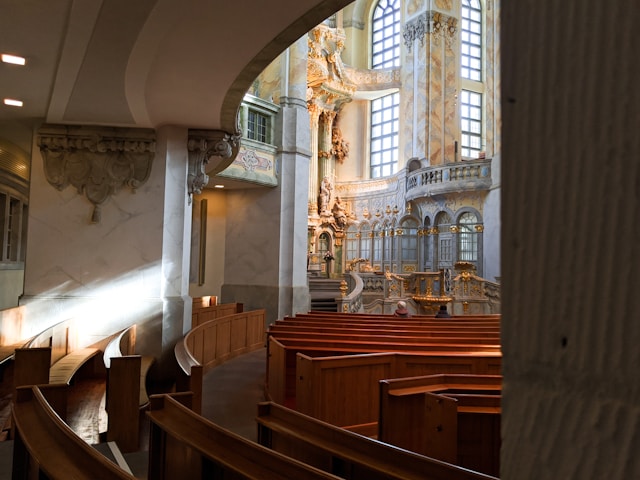
Unlocking the Secrets of Coptic: A Comprehensive Guide
Introduction
Coptic, a fascinating language with a rich history, serves as a bridge between ancient Egyptian and modern Egyptian vernaculars. It played a pivotal role in the liturgical practices of Coptic Christianity, shaping the religious and cultural identity of Egypt for centuries.
History of Coptic
Origins:
Coptic evolved from the Late Egyptian language spoken during the Greco-Roman era. As Christianity spread throughout Egypt, the language was modified to accommodate Christian concepts and scripts.
Development:
From the 3rd century CE onwards, Coptic emerged as a literary and liturgical language. It was used in the translation of the Bible and the creation of a wealth of theological writings.
Decline and Revival:
With the rise of Islam in the 7th century CE, Arabic gradually replaced Coptic as the primary language of Egypt. However, Coptic continued to be used in religious ceremonies and isolated communities. In recent decades, there has been a revival of interest in Coptic, leading to efforts to preserve and revitalize the language.
Coptic Dialects
Central Dialect:
The main dialect used in Coptic literature and liturgy, spoken in Lower and Middle Egypt.
Upper Dialect:
Spoken in Upper Egypt, known for its distinctive pronunciations and vocabulary.
Fayumic Dialect:
A divergent dialect spoken in the Fayum region, southwest of Cairo.
Further Reading: Coptic Dialects
Coptic Script
Origin:
The Coptic script is derived from the ancient Egyptian hieroglyphic system but simplified and adapted to the sounds of the Coptic language.
Characters:
The script consists of 32 letters, including 26 Greek letters and 6 modified Egyptian demotic signs.
Directionality:
Coptic can be written from left to right or from right to left, depending on the context.
Coptic Grammar
Nouns:
Coptic nouns have two grammatical genders (masculine and feminine) and two numbers (singular and plural).
Verbs:
Coptic verbs are conjugated according to person, tense, and mood. The present tense is formed by adding a suffix to the infinitive.
Syntax:
Coptic sentence structure typically follows a subject-verb-object order. Prepositions and conjunctions are used to connect words and clauses.
Coptic Literature
Religious Texts:
Coptic literature primarily consists of religious texts, including translations of the Bible, liturgical books, and theological treatises.
Historical Writings:
Coptic historians wrote chronicles, biographies, and accounts of events in Egypt.
Magical Texts:
A collection of Coptic texts contains magical spells, incantations, and astrological knowledge.
The Canons of Athanasius of Alexandria
Coptic Music
Liturgical Music:
Coptic liturgical music is characterized by its monophonic melodies and the use of the Coptic lute (oud).
Popular Music:
Contemporary Coptic music incorporates elements of Western popular music, often with religious themes.
Coptic in Modern Times
Liturgy:
Coptic remains the liturgical language of the Coptic Orthodox Church and the Coptic Catholic Church.
Education:
Coptic is taught as a compulsory subject in Coptic Christian schools and seminaries.
Preservation and Revitalization:
Organizations and scholars work to preserve and revitalize Coptic through language classes, publications, and cultural events.
Conclusion
Coptic, an ancient yet vibrant language, holds a special place in Egyptian history, culture, and religion. Its liturgical use, distinct script, and rich literature offer a glimpse into the past and continue to inspire the Coptic community today. As efforts to preserve and revitalize the language continue, Coptic stands as a testament to the enduring power of language and tradition.
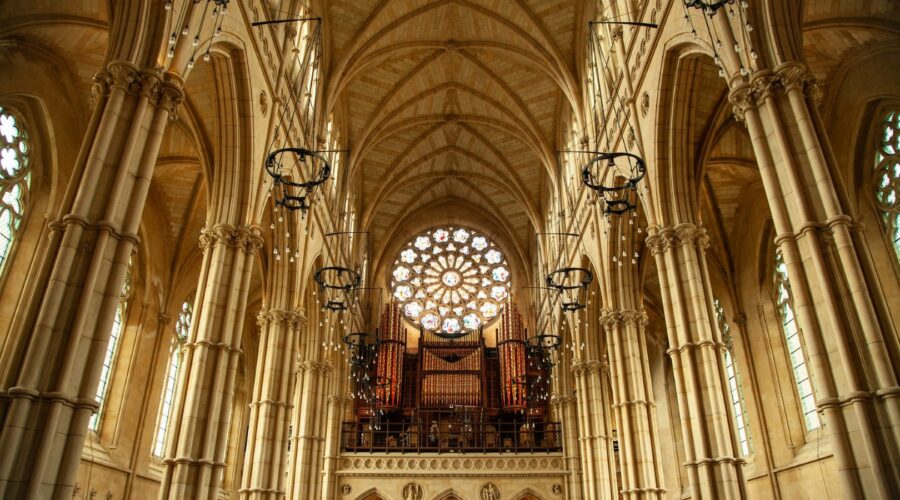
Unlock the Mysteries of Our Lady of Angels: A Comprehensive Guide to History, Devotion, and Miracles
A Historical Perspective: The Origin and Significance
The story of Our Lady of Angels begins in the 16th century in Italy. In 1520, a group of Capuchin friars received a vision of a beautiful woman dressed in white, carrying a baby in her arms. They interpreted this vision as a message from God to build a church in her honor.
The church was constructed in the town of Formello, near Rome, and dedicated to Our Lady of Angels. Over time, the church became a popular pilgrimage destination for Catholics seeking healing and miracles.
The Devotion to Our Lady of Angels
The devotion to Our Lady of Angels has spread throughout the world. She is venerated as a patron saint of sailors, nurses, and those who are sick or suffering.
There are many ways to show devotion to Our Lady of Angels. One popular way is to pray the Hail Mary. The Hail Mary is a prayer that asks Mary to intercede for us with God.
Another way to show devotion to Our Lady of Angels is to wear a scapular. A scapular is a small piece of cloth that is worn over the shoulders. It is a sign of our commitment to Mary and a reminder of her protection.
Miracles Attributed to Our Lady of Angels
Our Lady of Angels is credited with performing many miracles. These miracles include:
- Healing the sick
- Protecting sailors from storms
- Providing comfort to the suffering
These miracles have led to the widespread belief in the power of Our Lady of Angels intercession.
Churches and Shrines Dedicated to Our Lady of Angels
There are many churches and shrines dedicated to Our Lady of Angels around the world. Some of the most notable include:
- The Shrine of Our Lady of Angels in Formello, Italy
- The Church of Our Lady of Angels in Los Angeles, California
- The Basilica of Our Lady of Angels in Krakow, Poland
These churches and shrines are popular pilgrimage destinations for Catholics from all over the world.
Conclusion
Our Lady of Angels is a powerful intercessor who can help us in our time of need. She is a source of hope and comfort for those who are suffering. By showing devotion to Our Lady of Angels, we can experience her protection and miracles in our lives.
Additional Resources
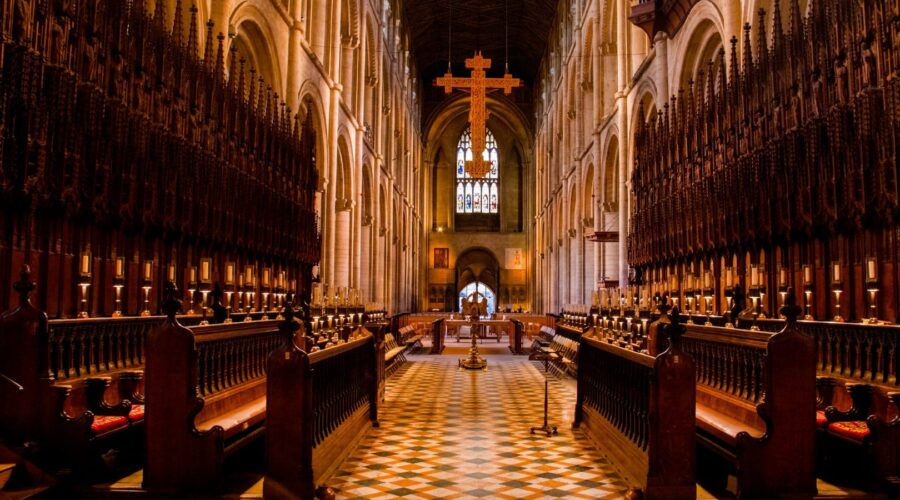
Discover the Rich History and Beliefs of the Old Catholic Church: An In-Depth Exploration
The Old Catholic Church, a distinct ecclesial body, holds a remarkable history and set of beliefs that have shaped its identity. Delve into this detailed blog post to explore the origins, teachings, and practices of this fascinating branch of Christianity.
Origins of the Old Catholic Church
- Emerged in 1870s as a response to Vatican I’s declaration of papal infallibility
- Led by Dutch bishop Joseph Hubert Reinkens and German theologian Ignaz von Döllinger
- Rejected papal authority and the dogma of infallibility, emphasizing a decentralized church structure
Doctrinal Beliefs
Key Principles:
- Episcopal Succession: Believes in the continuation of apostolic authority through bishops ordained in an unbroken line from the apostles.
- Sacramentalism: Recognizes the importance of sacraments, including baptism, Eucharist, and the sacrament of reconciliation.
- Clerical Celibacy: Maintains the practice of clerical celibacy for priests and bishops.
Differences from Roman Catholicism:
- Papal Authority: Rejects papal infallibility and the concept of papal supremacy.
- Mariology: Does not venerate Mary to the same extent as Roman Catholicism.
- Eucharist: Believes in the Real Presence of Christ in the Eucharist but does not endorse the doctrine of transubstantiation.
Practices and Worship
Liturgy:
- Retains traditional Catholic liturgies, including the Mass and the sacraments.
- Incorporates elements of Anglican worship, such as the use of English in the liturgy.
Ecumenical Relations:
- Engages in dialogue and cooperation with other Christian denominations, including the Anglican Communion and the Eastern Orthodox Church.
- Has full communion with the Anglican Church of Canada and the Porvoo Communion.
Structure and Organization
Episcopal Polity:
- Governed by bishops who form the International Bishops’ Conference.
- Each bishop is responsible for a diocese or jurisdiction.
National Synods:
- Each country or region with a significant Old Catholic presence establishes a national synod.
- Synods are composed of clergy, lay representatives, and bishops.
Ecumenical Councils:
- International gathering of Old Catholic bishops to discuss doctrinal and pastoral matters.
- Held periodically to provide direction and unity to the church.
Challenges and the Future
- Membership and Demographics: Facing challenges in attracting and retaining members, particularly in younger generations.
- Ecumenical Relations: Balancing the need for unity with other Christian denominations while maintaining its distinct identity.
- Modernization and Adaptation: Navigating the need for modernization while preserving traditional practices and beliefs.
Conclusion
The Old Catholic Church, with its rich history, distinctive beliefs, and commitment to ecumenism, offers a unique perspective on Christianity. Its ongoing journey of faith, both challenging and rewarding, continues to shape its identity and inspire its members. Understanding the Old Catholic Church深ens our appreciation for the diversity of Christian traditions and the enduring quest for unity and renewal within the Christian faith.
Old Catholic Churches Worldwide Country Number of Parishes Germany 100+ Netherlands 30+ Switzerland 20+ Austria 15+ United States 10+ 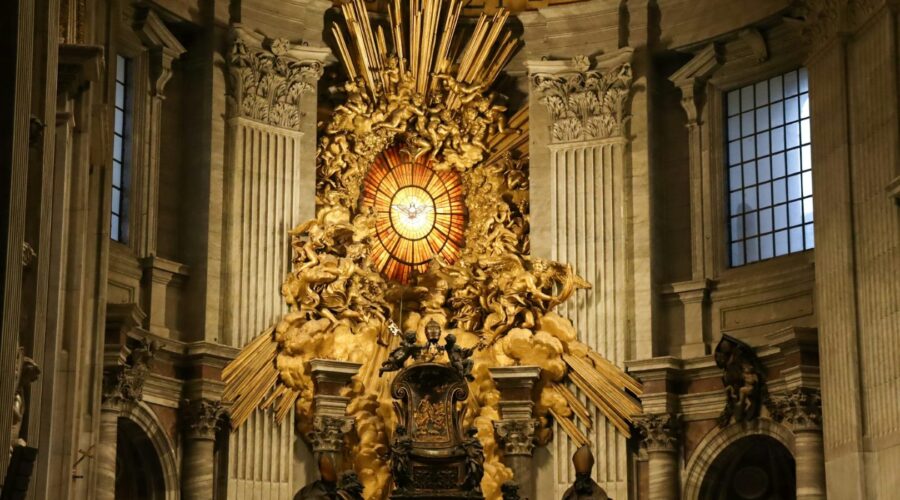
Discover the Serenity and Splendor of St. Maria Goretti Church
Nestled amidst the bustling metropolis of Rome, St. Maria Goretti Church stands as a beacon of faith and tranquility. This hallowed sanctuary, named after the Italian martyr Maria Goretti, is a place where the divine meets the human, offering a spiritual haven for pilgrims and locals alike.
Historical Significance
The story of St. Maria Goretti Church is intertwined with the life of Maria Goretti, a young Italian girl who was brutally murdered in 1902 at the tender age of 11. Born into poverty, Maria endured unspeakable suffering but remained unwavering in her faith. Her tragic death and subsequent canonization in 1950 inspired the construction of this church, which serves as a testament to her unwavering spirit and the power of forgiveness.
Architectural Marvel
St. Maria Goretti Church is a masterpiece of modern architecture, designed by the renowned Italian architect Luigi Moretti. Its distinctive cylindrical shape, spiraling staircase, and intricate mosaic work create a mesmerizing visual experience. The church’s interior is adorned with stunning stained glass windows that depict scenes from the life of Maria Goretti, casting a vibrant glow throughout the sanctuary.
Interior Highlights:
- Main Altar: The focal point of the church, adorned with a large statue of Maria Goretti surrounded by intricate carvings and elaborate candleholders.
- Pieta: A life-size sculpture of Mary holding the crucified Christ, representing the sorrow and compassion of motherhood.
- Mosaic Walls: The walls are adorned with breathtaking mosaics, depicting biblical scenes and the life of Maria Goretti.
Spiritual Sanctuary
Beyond its architectural beauty, St. Maria Goretti Church is a place of profound spiritual significance. Pilgrims from around the world flock to this holy site to venerate Maria Goretti and seek solace and guidance. The church offers daily masses, confessions, and other devotional services, creating an environment conducive to reflection and spiritual growth.
Devotional Practices:
- Novena to St. Maria Goretti: A nine-day prayer devoted to Maria Goretti, for intercessions and spiritual blessings.
- Prayer of the Faithful: Visitors can light candles and write petitions, placing them before the altar for prayers and intentions.
- Relic of Maria Goretti: A relic of Maria Goretti, located within the church, is a source of devotion and inspiration.
Visitor Information
- Address: Via Laurentina 450, 00142 Rome, Italy
- Hours: Open daily from 7:00 AM to 8:00 PM (mass times vary)
- Admission: Free admission
- Accessibility: The church has wheelchair accessible ramps and elevators.
Conclusion
St. Maria Goretti Church is more than just an architectural masterpiece; it is a testament to the power of faith, forgiveness, and the indomitable human spirit. Its serene atmosphere and rich history make it a must-visit destination for pilgrims, tourists, and seekers of spiritual solace. Whether you come to venerate Maria Goretti, admire its architectural splendor, or simply find a moment of tranquility amidst the bustling city, St. Maria Goretti Church offers an unforgettable and deeply moving experience.
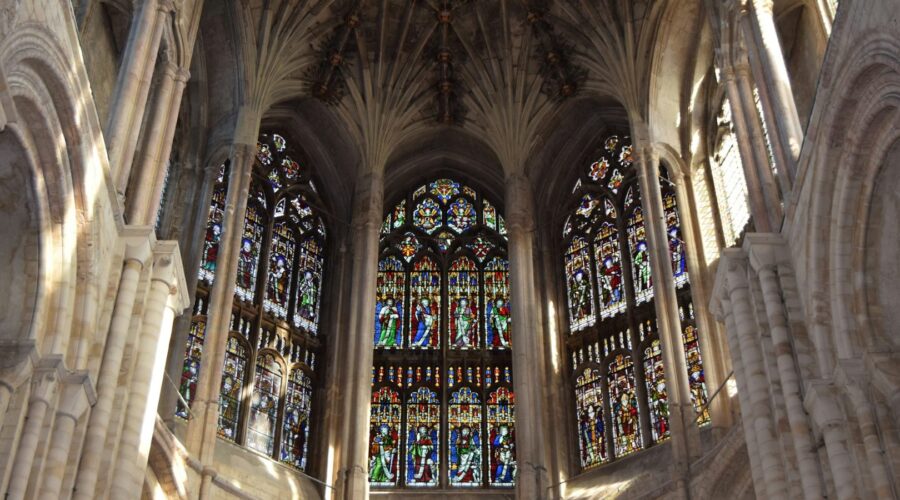
Discover the Inspiring Legacy of Pastor Leon Fontaine: A Beacon of Faith and Community Service
Introduction
Pastor Leon Fontaine was a renowned spiritual leader, community activist, and social justice advocate whose life and work left an indelible mark on the city of Montreal and beyond. As the founder and pastor of the influential Emmanuel Baptist Church in the Côte-des-Neiges neighborhood, he dedicated his life to serving the needs of his congregation and the broader community. Pastor Fontaine’s unwavering faith, compassionate heart, and tireless efforts continue to inspire generations of Montrealers to this day.
Early Life and Education
Leon Fontaine was born in Montreal on September 28, 1929, to parents of Haitian descent. He grew up in the poverty-stricken neighborhood of Griffintown, where he witnessed firsthand the challenges and injustices faced by marginalized communities. Fontaine’s early experiences instilled in him a deep sense of empathy and a desire to make a difference in the lives of others.
After completing his primary education, Fontaine attended Sir George Williams College (now Concordia University) where he earned a degree in social work. He also pursued theological studies at the United Theological College of Montreal and was ordained as a Baptist minister in 1954.
Founding of Emmanuel Baptist Church
In 1956, Pastor Fontaine founded Emmanuel Baptist Church in response to the growing need for a vibrant and inclusive church community in the Côte-des-Neiges neighborhood. The church quickly became a spiritual home for people from all walks of life, regardless of their race, ethnicity, or social background. Under Fontaine’s leadership, Emmanuel Baptist Church became known for its welcoming atmosphere, dynamic worship services, and commitment to social justice.
Community Activism and Social Justice Initiatives
Beyond his pastoral duties, Pastor Fontaine was actively involved in community activism and social justice initiatives. He played a pivotal role in the founding of the Côte-des-Neiges Black Community Centre, which provided vital services to the neighborhood’s Black population. Fontaine also advocated for affordable housing, access to healthcare, and the rights of immigrants and refugees.
In 1969, Pastor Fontaine co-founded the Black Coalition of Quebec, a provincial organization that sought to address issues of racial discrimination and inequality. He served as the organization’s president for several years and led numerous campaigns for social justice reform.
Interfaith Dialogue and Ecumenical Partnerships
Pastor Fontaine was a strong advocate for interfaith dialogue and ecumenical partnerships. He believed that different religious traditions could learn from and enrich one another, and he worked tirelessly to build bridges between different faith communities. Fontaine was instrumental in the creation of the Montreal Interfaith Council, which brought together leaders from various religious groups to promote understanding and cooperation.
Awards and Recognition
Pastor Leon Fontaine received numerous awards and accolades for his outstanding contributions to the Montreal community. In 1992, he was appointed to the Senate of Canada, where he served with distinction for 11 years. In 2000, he was awarded the Order of Canada, one of the highest civilian honors in the country. Fontaine also holds several honorary doctorates from universities in Canada and the United States.
Legacy and Impact
Pastor Leon Fontaine’s legacy continues to inspire and guide Montrealers today. His unwavering faith, compassionate heart, and tireless advocacy for social justice left an indelible mark on the city. Emmanuel Baptist Church remains a vibrant and active community, carrying on Fontaine’s mission of inclusivity, service, and justice. The Côte-des-Neiges neighborhood is a testament to his lifelong commitment to improving the lives of its residents.
Conclusion
Pastor Leon Fontaine was a true visionary and a champion for the marginalized. His life and work are a testament to the power of compassion, faith, and community engagement. As we continue to grapple with issues of inequality and injustice, Pastor Fontaine’s legacy serves as a reminder that we can make a difference in the lives of others, one step at a time.
Additional Resources
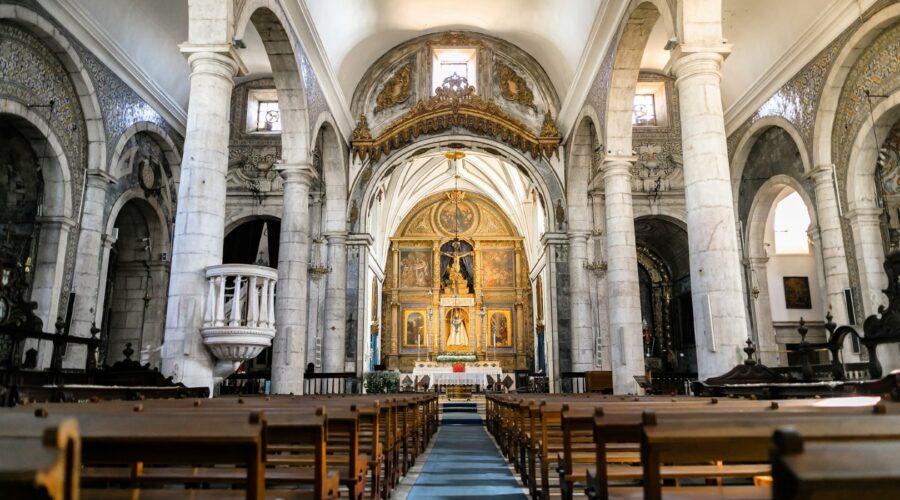
St. Mark’s Episcopal Church: A Spiritual Haven in the Heart of New Canaan
Nestled amidst the picturesque town of New Canaan, Connecticut, St. Mark’s Episcopal Church stands as a beacon of faith and community. Established in 1854, this historic parish has been a spiritual home for generations of believers, offering a vibrant and welcoming environment for all.
History and Architecture
Foundation and Growth
St. Mark’s traces its origins to a small group of Episcopalians who met in a private home in 1854. As the congregation grew, they purchased a plot of land on Main Street in 1855 and constructed a modest chapel. Over the years, the parish expanded, adding a parish house, a rectory, and a larger sanctuary.
Architectural Heritage
The current sanctuary, designed in the Gothic Revival style, was completed in 1888. Its soaring spires and stained glass windows create an awe-inspiring atmosphere. The interior is adorned with intricate woodwork, marble sculptures, and a magnificent pipe organ.
Spiritual Life and Worship
Weekly Services
St. Mark’s offers a variety of weekly services to meet the needs of its diverse congregation. Sunday services include:
- Holy Eucharist (8:00 AM): A traditional liturgy with music and readings.
- Sunday School (9:30 AM): Classes for children and adults of all ages.
- Holy Eucharist (10:30 AM): A contemporary service with modern music and topical sermons.
Special Services
In addition to weekly services, St. Mark’s hosts special events throughout the year, such as:
- Ash Wednesday Service
- Holy Week Services
- Christmas Eve Service
Sacraments and Pastoral Care
St. Mark’s offers the sacraments of Baptism, Confirmation, Holy Eucharist, and Reconciliation. The clergy provide pastoral care to parishioners in times of need, such as during illness or bereavement.
Community Outreach and Missions
St. Mark’s is deeply committed to serving the community and beyond. The parish supports various outreach programs, including:
- The Open Door Shelter: A local homeless shelter.
- Meals on Wheels: Delivering meals to homebound individuals.
- Mission trips: Sending teams to provide assistance in disaster-stricken areas.
Music and the Arts
Music plays a vital role in the worship life of St. Mark’s. The parish boasts several choirs, including:
- The Chancel Choir: A mixed-voice choir that sings at the 10:30 AM service.
- The Parish Choir: A smaller choir that assists with special services.
- The Children’s Choir: A choir for children ages 4-12.
St. Mark’s also hosts a variety of musical events, such as concerts, recitals, and workshops.
Education and Formation
St. Mark’s is committed to the spiritual growth and education of its members. The parish offers a wide range of programs, including:
- Adult Education Classes: Courses on theology, scripture, and current events.
- Confirmation Classes: Preparing youth and adults for Confirmation.
- Retreats and Workshops: Opportunities for spiritual reflection and growth.
Leadership and Staff
St. Mark’s is led by a rector, who is assisted by a team of deacons, lay leaders, and staff. The parish is committed to fostering a supportive and inclusive community where all members feel valued and welcome.
Role Name Rector The Rev. Dr. John Smith Deacon The Rev. Deacon Mary Jones Senior Warden Mr. Michael Brown Junior Warden Ms. Susan White Contact Information
Address: 111 Main Street, New Canaan, CT 06840
Phone: (203) 966-3530
Website: www.stmarksnewcanaan.org
Conclusion
St. Mark’s Episcopal Church is a thriving and vibrant parish in the heart of New Canaan. With its rich history, beautiful architecture, and welcoming community, St. Mark’s offers a place of spiritual nourishment, growth, and service for people of all ages and backgrounds. Whether you are seeking a new spiritual home or simply looking for a place to connect with others, St. Mark’s Episcopal Church invites you to experience the transformative power of faith.
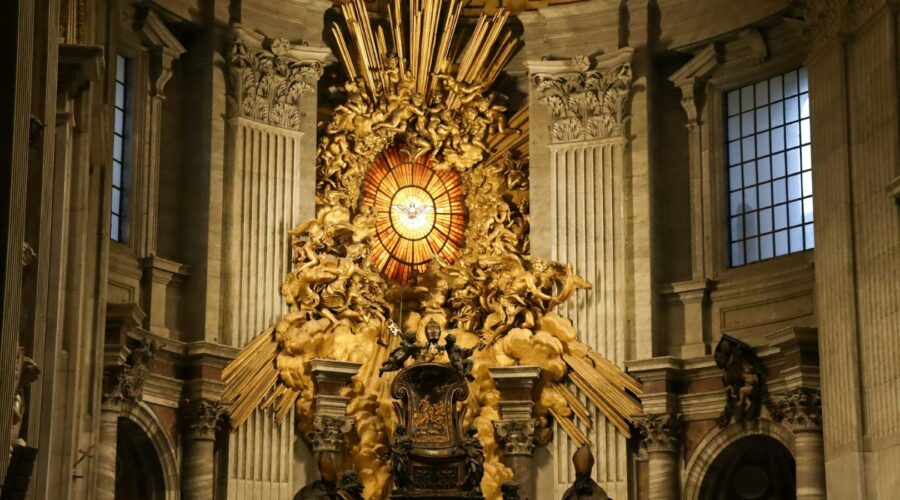
Explore the Catechesis of the Good Shepherd: A Transformative Approach to Faith Formation
Introduction
The Catechesis of the Good Shepherd (CGS) is an innovative and globally recognized catechetical approach that fosters a deep and authentic relationship between children and God. It is based on the principles of Maria Montessori and Scripture and offers a unique way to nurture the spiritual lives of children.
Key Principles
1. Respect for the Child- Treats children with respect and reverence, recognizing their unique strengths and developmental needs.
- Provides a prepared environment tailored to their developmental stage and interests.
2. Contemplation and Silence
- Values silence and stillness as important components of prayer and reflection.
- Creates opportunities for children to experience God’s presence through moments of contemplation.
3. Direct Encounter with Scripture
- Presents Scripture narratives in an accessible and engaging manner.
- Allows children to interact with Scripture through storytelling, role-playing, and art.
4. Liturgical Catechesis
- Integrates children into the liturgical life of the Church.
- Provides opportunities for them to participate in Mass and other sacraments.
Structure and Methodology
CGS is divided into three levels, each catering to a specific developmental stage of the child:
1. Level I (3-6 years):
- Focuses on establishing a foundation of faith, prayer, and community.
- Introduces key Scripture stories and liturgical practices.
2. Level II (6-9 years):
- Explores the Old Testament, emphasizing God’s covenant with his people.
- Guides children in understanding the sacrament of Reconciliation.
3. Level III (9-12 years):
- Focuses on the New Testament, particularly the life and ministry of Jesus.
- Prepares children for the sacrament of Confirmation.
Within each level, CGS follows a structure of:
- Introduction of the Scripture narrative
- Discussion and interaction
- Prayer and reflection
- Application to daily life
Benefits and Impact
CGS has numerous benefits, including:
- Nurturing a deep and personal relationship with God
- Developing a strong foundation in Scripture and Catholic tradition
- Promoting spiritual growth and maturity
- Fostering a sense of community and belonging
- Preparing children for active participation in the Church
Tips for Implementation
- Start small and gradually expand your program.
- Create a welcoming and prepared environment.
- Train catechists and provide ongoing support.
- Partner with parents and the parish community.
- Be patient and allow time for children to grow in their faith.
Conclusion
The Catechesis of the Good Shepherd is a transformative approach to faith formation that empowers children to encounter God in a profound and meaningful way. By incorporating Montessori principles, CGS creates a child-centered environment where children can grow in their relationship with God, explore the riches of Scripture, and actively participate in the life of the Church.
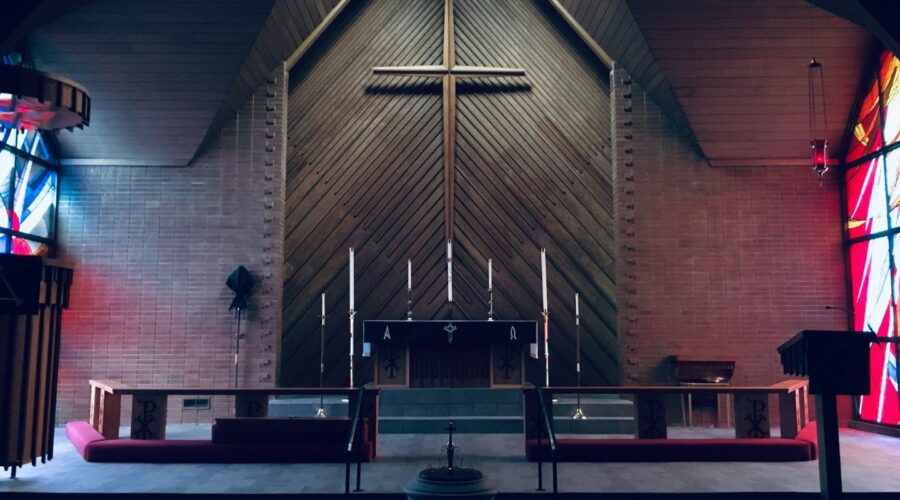
Discover the Architectural Splendor and Spiritual Significance of St. Peter and Paul Church
Introduction
St. Peter and Paul Church, perched majestically atop Capitol Hill in the heart of Washington, D.C., stands as a captivating architectural masterpiece and a testament to the intertwined history of faith and nationhood. As one of the oldest Catholic churches in the United States, it has played a pivotal role in shaping the religious and civic landscape of the nation’s capital.
History and Architecture
Humble Beginnings
St. Peter and Paul’s origins can be traced back to 1794, when a small group of Catholic immigrants established a congregation in Georgetown. In 1804, the construction of a modest brick church commenced, marking the church’s official founding.
Expansion and Reconstruction
As the congregation grew, so did the need for a larger church. In 1842, the current neoclassical structure was designed by renowned architect James Hoban, who also designed the White House. The church was completed in 1847, featuring a Greek Revival facade and a distinctive octagonal bell tower.
Civil War and Beyond
During the Civil War, St. Peter and Paul served as a refuge for wounded soldiers and a gathering place for Confederate sympathizers. After the war, the church underwent significant renovations and expansions, including the addition of the transepts, sanctuary, and apse.
Architectural Features
Neoclassical Facade
The church’s facade exhibits the characteristic features of Greek Revival architecture, with its symmetrical composition, pedimented portico, and grand Ionic columns.
Octagonal Bell Tower
The towering octagonal bell tower is a unique and striking feature of the church. It rises to a height of 152 feet and houses three bells.
Interior Splendor
Inside, the church boasts a spacious and awe-inspiring sanctuary. The vaulted ceilings are adorned with intricate frescoes, while the walls are lined with exquisite stained-glass windows depicting biblical scenes.
Spiritual Significance
Catholicism in Washington, D.C.
St. Peter and Paul Church has played a central role in the development of Catholicism in Washington, D.C. It was the first Catholic parish established in the city and has served as the seat of the Archdiocese of Washington since 1851.
Pastoral Care and Service
Throughout its history, the church has been a beacon of spiritual guidance and support for the Catholic community. It offers a wide range of pastoral services, including Masses, sacraments, and counseling.
Social Justice and Advocacy
St. Peter and Paul Church has a long-standing commitment to social justice and advocacy. The church has actively participated in the fight for civil rights, immigrant rights, and the eradication of poverty.
Notable Figures
Archbishop John Carroll
The first Archbishop of Baltimore, John Carroll, was closely associated with St. Peter and Paul Church. He celebrated Mass in the original church building and was instrumental in the establishment of the Catholic Church in the United States.
Francis Scott Key
The author of “The Star-Spangled Banner,” Francis Scott Key, was a member of St. Peter and Paul Church. He is buried in the church cemetery.
Pope John Paul II
In 1979, Pope John Paul II visited St. Peter and Paul Church and celebrated Mass on the steps of the church. His visit was a historic moment for the Catholic community in Washington, D.C., and for the church itself.
Today and Beyond
St. Peter and Paul Church continues to thrive as a vibrant and welcoming Catholic community. It is listed on the National Register of Historic Places and remains a popular tourist attraction for its architectural beauty and historical significance. As the nation’s capital continues to evolve, St. Peter and Paul Church will undoubtedly remain a cornerstone of faith and community for generations to come.
Tips for Visitors
*
Attend a Mass:
St. Peter and Paul Church offers several Masses throughout the week. Visitors are welcome to attend and experience the vibrant liturgical life of the parish.
*
Explore the Church:
Take your time to admire the church’s beautiful architecture and intricate artwork. Guided tours are available upon request.
*
Visit the Gift Shop:
The church gift shop offers a range of religious items, books, and souvenirs.
*
Explore the Neighborhood:
St. Peter and Paul Church is located in the historic Capitol Hill neighborhood. Take some time to explore the neighborhood’s charming streets and historic buildings.
Conclusion
St. Peter and Paul Church stands as a testament to the enduring power of faith, community, and architectural legacy. Its majestic presence on Capitol Hill serves as a reminder of the intertwined history of the United States and the Catholic Church. Whether you are a visitor seeking inspiration or a lifelong parishioner, St. Peter and Paul Church welcomes you to experience its spiritual and historical significance in the heart of the nation’s capital.
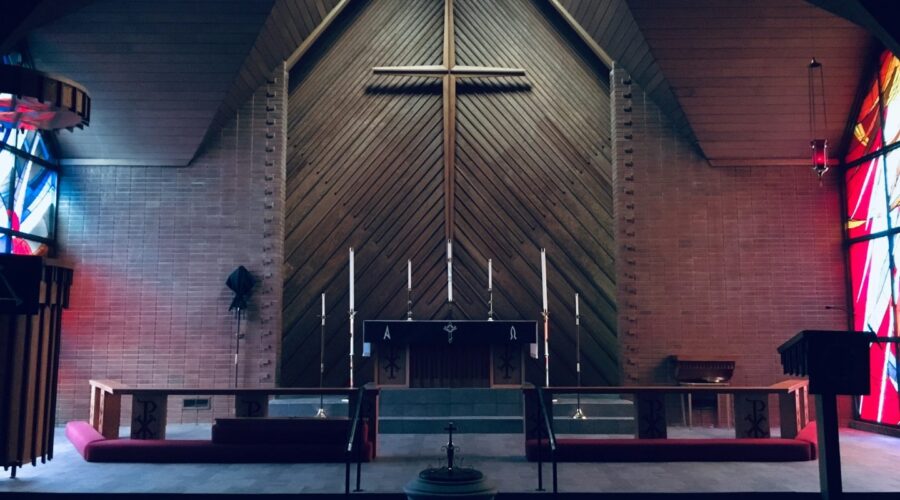
Discover the Largest and Most Impressive Churches in the World
The Holy Trinity Cathedral: A Symbol of Majestic Elegance
Located in Tbilisi, Georgia, the Holy Trinity Cathedral stands tall as the largest church not only in the country but also in the entire Caucasus region. With its breathtaking architecture and colossal dimensions, this cathedral reflects the deep-seated faith and cultural heritage of the Georgian people.
The Holy Trinity Cathedral was consecrated in 2004 and serves as the main cathedral of the Georgian Orthodox Church. It features a unique blend of traditional Georgian Orthodox architecture with modern design elements. Its grandeur is evident in its soaring height, intricate facade, and awe-inspiring interior.
Key Features:
- Height: 101 meters (331 feet)
- Capacity: Over 15,000 worshippers
- Bell tower: 57 meters (187 feet) tall with 12 bells
- Golden dome: 25 meters (82 feet) in diameter
The interior of the cathedral is adorned with exquisite frescoes, mosaics, and iconography. Its vast nave is supported by massive pillars, creating a sense of spaciousness and tranquility. The cathedral also boasts a large underground baptismal area and a museum dedicated to Georgian religious art and history.
Basilica of the National Sanctuary of Our Lady of Aparecida: A Symbol of Faith and Pilgrimage
Nestled in the heart of Aparecida, Brazil, the Basilica of the National Sanctuary of Our Lady of Aparecida is the largest church in the Western Hemisphere and one of the largest in the world. It is a pilgrimage site for devout Catholics from across Brazil and beyond.
The Basilica was built in the 18th century to house a statue of Our Lady of Aparecida, which is revered as the patroness of Brazil. The original statue was discovered in the nearby Paraíba River and is now enshrined in the basilica.
Key Features:
- Length: 188 meters (617 feet)
- Width: 128 meters (420 feet)
- Height: 108 meters (354 feet)
- Capacity: Over 45,000 worshippers
The exterior of the basilica is characterized by its grandiose Neo-Romanesque architecture. Its massive facade features intricate carvings and statues, while the central dome is topped with a large cross. The interior is equally impressive, with soaring vaults, elegant stained glass windows, and a magnificent altar.
Saint Peter’s Basilica: A Timeless Masterpiece of Art and Architecture
Located in the heart of Vatican City in Rome, Saint Peter’s Basilica is the largest and one of the holiest churches in the Catholic world. It is a masterpiece of Renaissance and Baroque architecture and a pilgrimage site for millions of visitors each year.
Construction of Saint Peter’s Basilica began in the 16th century and was completed over a century later. It was built on the site of the former Saint Peter’s Basilica, which was believed to be the burial place of Saint Peter, one of the apostles of Jesus Christ.
Key Features:
- Length: 212 meters (695 feet)
- Width: 149 meters (489 feet)
- Height: 136 meters (446 feet)
- Capacity: Over 60,000 worshippers
The basilica is renowned for its iconic dome, designed by Michelangelo, which dominates the skyline of Rome. Its interior is equally awe-inspiring, with grand columns, elaborate sculptures, and priceless works of art by renowned artists such as Michelangelo, Raphael, and Bernini.
Tips for Visiting the Largest Churches in the World
* Plan your visit in advance and check the opening hours and dress code of the church.
* Allow ample time for your visit to fully appreciate the grandeur and beauty of these remarkable structures.
* Consider hiring a guide for a more insightful and informative experience.
* Be respectful of the religious significance of these churches and maintain a dignified demeanor.
* Take your time to explore the interior and exterior of the churches, paying attention to the architecture, artwork, and historical significance.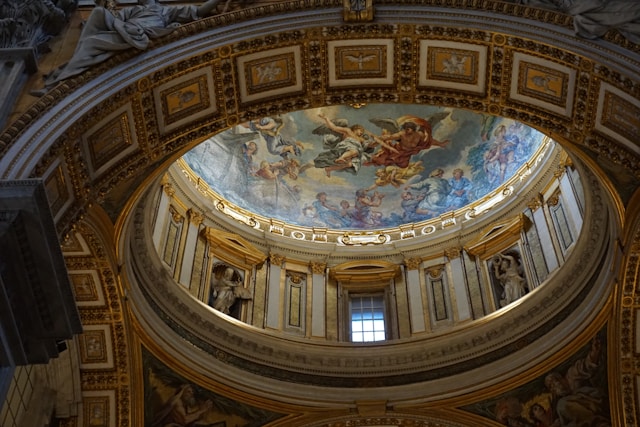
Ascension Catholic Church: A Comprehensive Guide
About Ascension Catholic Church
Ascension Catholic Church is a vibrant faith community located in the heart of [city name]. It is a welcoming and diverse parish that strives to live out the Gospel message of love, service, and justice. The church has a rich history dating back to the [date], and has been a cornerstone of the community for generations.
Ascension Catholic Church is a member of the Diocese of [diocese name]. The parish is led by a dedicated team of priests, deacons, and lay ministers who are committed to serving the spiritual and temporal needs of the community.
Mission and Vision
Ascension Catholic Church’s mission is to:
- Proclaim the Good News of Jesus Christ
- Celebrate the sacraments with joy and reverence
- Serve the poor, the marginalized, and the vulnerable
- Foster community and unity among all people
The parish’s vision is to be a beacon of hope and a source of strength for all who come through its doors.
Services and Activities
Ascension Catholic Church offers a wide range of services and activities for people of all ages and backgrounds. These include:
- Mass at various times throughout the week
- Sacramental preparation
- Youth groups
- Adult faith formation
- Social justice initiatives
- Community outreach
The church also has a number of social events and activities throughout the year, such as picnics, potlucks, and movie nights.
History
Ascension Catholic Church was founded in [date] by a group of Catholic families who lived in the [neighborhood name] area. The first Mass was celebrated in a small rented hall. In [date], the parish purchased a piece of land on [street name] and built a small chapel. The chapel was dedicated on [date].
As the parish grew, the chapel became too small. In [date], the parish broke ground on a new church building. The new church was completed in [date] and dedicated on [date].
Over the years, Ascension Catholic Church has continued to grow and expand. In [date], the parish added a new wing to the church building, which included a new sanctuary, a meeting hall, and a library. The parish also purchased a new building to house its youth programs.
Community Outreach
Ascension Catholic Church is committed to serving the community. The parish has a number of outreach programs, including:
- A food pantry
- A clothing closet
- A tutoring program
- A homeless ministry
- A prison ministry
The parish also works with a number of local organizations to provide support to those in need.
How to Get Involved
There are many ways to get involved at Ascension Catholic Church. You can:
- Attend Mass
- Volunteer your time
- Make a donation
- Join a ministry or group
- Become a member of the parish
To learn more about Ascension Catholic Church, please visit the parish website or call the parish office at [phone number].
Contact Information
Ascension Catholic Church
[Address]
[Phone number]
[Email address]
[Website]
Social Media
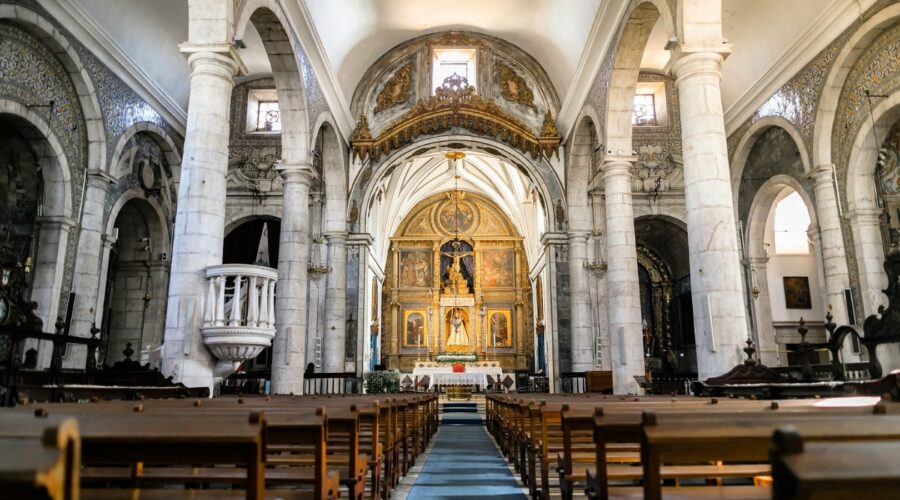
Discover St. Anthony Catholic Church: A Pillar of Faith and Community
St. Anthony Catholic Church, steeped in tradition and unwavering faith, has played a pivotal role in the spiritual and civic fabric of its community. This comprehensive guide will explore the rich history, vibrant ministries, and unwavering commitment that define this renowned parish.
Tracing the Roots of St. Anthony
The Founding Years
In the early 1900s, a growing Catholic population in the area sparked the need for a new parish. In 1910, St. Anthony Catholic Church was established, named after the beloved patron saint of the poor and the lost.
A Century of Growth
Over the decades, the parish has witnessed remarkable growth. Construction of the church building began in 1912 and was completed in 1915. The parish school, a cornerstone of Catholic education in the community, was founded in 1920.
Embracing the Sacraments
Mass and Worship
At the heart of St. Anthony Catholic Church is the celebration of the Eucharist. Masses are offered daily and on weekends, providing opportunities for parishioners to gather, pray, and receive the Body and Blood of Christ.
Baptism, Confirmation, and Reconciliation
The church offers the sacraments of Baptism, Confirmation, and Reconciliation to all who seek to deepen their relationship with God. These sacraments are milestones in a Catholic’s faith journey.
Nurturing a Vibrant Community
Ministries and Service
St. Anthony’s vibrant ministries encompass a wide range of activities, including:
- Youth groups for children and teenagers
- Bible studies and prayer groups
- Outreach to the poor and vulnerable
Education and Formation
The parish school and religious education programs provide a Catholic education from childhood through adulthood. Classes focus on the Catholic faith, doctrine, and traditions.
Social and Cultural Events
St. Anthony’s fosters a sense of community through social and cultural events, including:
- Parish picnics and festivals
- Cultural performances and lectures
- Community service projects
Leadership and Guidance
Pastors of the Parish
Throughout its history, St. Anthony Catholic Church has been guided by a succession of dedicated priests who have served as pastors. Their leadership and spiritual guidance have shaped the parish.
Lay Leadership and Staff
Alongside the priests, lay leaders and staff play a vital role in the day-to-day operations of the parish. They serve on committees, lead ministries, and provide support to the community.
Community Impact
A Beacon of Faith
St. Anthony Catholic Church stands as a beacon of faith and spirituality in its community. It provides a place of worship, fellowship, and spiritual growth for all who seek it.
Social Service and Outreach
The parish is actively involved in social service and outreach programs, reaching out to those in need and making a tangible difference in the community.
Education and Cultural Enrichment
Through its school and religious education programs, St. Anthony’s fosters a lifelong love of learning and a deep understanding of the Catholic faith.
Tips for Attending St. Anthony’s
* Visit the parish website for Mass times and other events.
* Contact the parish office for information on sacraments, ministries, and programs.
* Dress respectfully for Mass and other religious services.
* Be prepared to participate actively in the liturgy and prayer.
* Seek out opportunities to connect with other parishioners and get involved in the community.Conclusion
St. Anthony Catholic Church is a vibrant and welcoming community that has served its faithful for over a century. With its rich history, unwavering faith, and commitment to service, the parish continues to be a beacon of spirituality, community, and outreach. Through its sacraments, ministries, and educational offerings, St. Anthony’s empowers its parishioners to live out their faith with joy, purpose, and love.